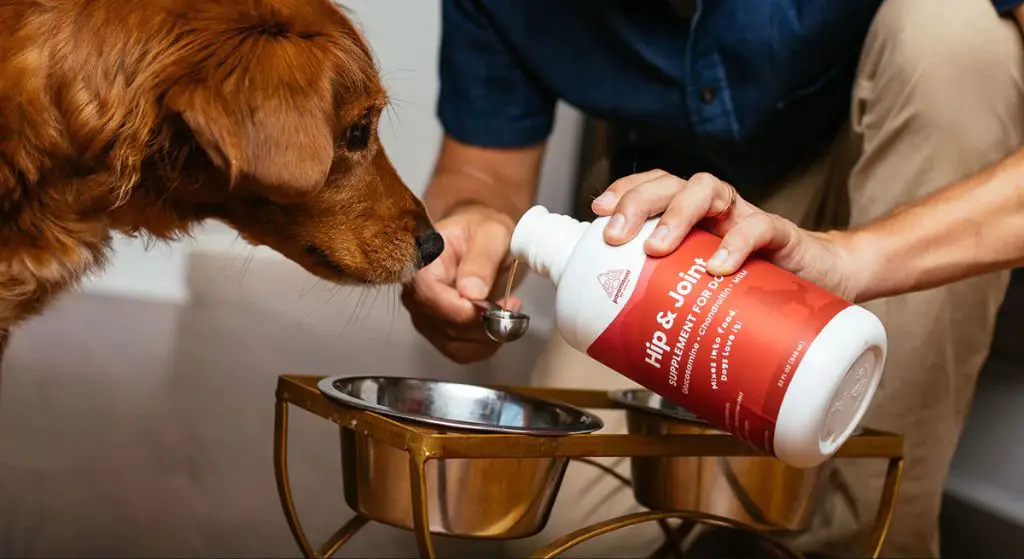What are Canine Period Cramps?
Canine period cramps, also known as primary dysmenorrhea, refer to painful cramping of the uterus during a female dog’s heat cycle. The cramping occurs when the uterus contracts to expel its lining. While mild cramping during this time is normal, severe cramping can be very painful and concerning for dog owners.
The main symptoms of canine period cramps include:
- Excessive panting
- Restlessness
- Loss of appetite
- Lethargy
- Straining to urinate or defecate
- Curling up in a ball
The cramps are caused by contractions of the uterus as it sheds its lining. Prostaglandins and other inflammatory compounds are released during this process, which stimulate the uterus to contract. This can result in painful sensation. Dogs with more severe cramps tend to have higher levels of prostaglandins.
When Do Dogs Get Period Cramps?
Canine period cramps typically occur around the time of estrus or heat in the reproductive cycle. Estrus refers to the stage when the female dog can become pregnant, which happens about twice a year and lasts around 2-3 weeks. The onset of heat is often accompanied by vaginal bleeding and attracting male suitors. This is due to a surge of estrogen. As estrogen levels decline toward the end of estrus, the uterine lining begins to thicken in preparation for pregnancy. The thickening combined with prostaglandin release leads to mild contractions and cramping as the body releases the uterine lining. This shedding is a dog’s version of a menstrual period, should pregnancy not occur. The cramps tend to peak right before or at the start of the heat cycle as the body goes through physical changes.
While all unsprayed female dogs experience a heat cycle and may get cramps, some breeds tend to have more severe symptoms. Large breed dogs like Great Danes and Saint Bernards are more prone to painful cramping due to their size. Overweight and older dogs also seem more susceptible as well. Talk to your vet if your dog has a history of particularly painful episodes to discuss prevention and pain management strategies.
Risk Factors for Severe Cramps
Certain dogs are more prone to experiencing severe menstrual cramps than others. Here are some of the key risk factors:
Age
Younger dogs going through their first few heat cycles are more likely to have cramping than older, experienced dogs. The body needs some time to adjust to the hormonal fluctuations of the heat cycle. Cramping tends to decrease with each subsequent cycle.
Breed
Some breeds are genetically predisposed to more painful periods. Labrador Retrievers, Golden Retrievers, and Poodles often experience moderate to severe cramping. On the other hand, Siberian Huskies and Alaskan Malamutes tend to have milder symptoms.
Medical Conditions
Underlying medical conditions can exacerbate period cramps in dogs. Issues like uterine infections, tumors, cysts, or anatomical abnormalities involving the reproductive tract put dogs at higher risk. Other conditions like diabetes or hypothyroidism can also worsen cramping.
Signs of Period Cramps
Some common signs that your dog may be experiencing period cramps include:
Restlessness: You may notice your dog pacing around, constantly changing positions, or acting agitated. She may have trouble getting comfortable.
Difficulty getting comfortable: Your dog may repeatedly circle, dig, or nest. She may frequently get up, change positions, and lie back down.
Crying: Some dogs vocalize when in pain. Yelping, whining, or other cries can indicate your dog is having cramps.
Additional signs can include appetite loss, lethargy, shaking, and obsessive licking. If the cramps are severe, you may notice vomiting or diarrhea. Pay close attention to any behavior changes during your dog’s heat cycle.
When to See the Vet
Dog period cramps are usually mild, but in some cases they can become severe and require veterinary attention. Here are some signs that indicate your dog needs to see the vet:
Severe pain – If your dog is showing signs of intense pain that is not relieved by over-the-counter medications or home remedies, take her to the vet promptly. Prolonged, severe cramping could be a sign of a more serious medical issue.
Not eating – Loss of appetite or refusal to eat are common signs of discomfort in dogs. However, if the behavior persists for more than 24 hours, it could indicate a greater problem.
Lethargy – While mild fatigue is expected, extreme lethargy or inability to stand are red flags. Your dog may be dehydrated or have an underlying condition.
Trust your instincts as a pet owner. If your dog seems to be in greater distress than expected from normal menstruation, don’t wait – contact your vet right away. Severe, persistent cramping could stem from uterine disease, infection, or other issues requiring prompt veterinary attention.
Relieving Mild Cramps at Home

For mild menstrual cramps, there are some simple home remedies you can try to help relieve your dog’s discomfort:
Warm compresses – Place a warm, damp washcloth or heating pad set to low over your dog’s lower belly and hips. The warmth can help relax cramped muscles and stimulate blood flow. Do this for 10-15 minutes at a time, a few times per day during her period.
Gentle massage – Lightly massaging your dog’s lower back and tummy can help soothe cramps. Use gentle, kneading motions and avoid putting too much pressure on her abdomen. Massage for 5-10 minutes at a time when cramps seem worse.
Comfortable bedding – Make sure your dog has soft, cushy bedding to rest on while she’s menstruating. Orthopedic dog beds or piled blankets can help her relax and take pressure off her abdomen.
Pain Medication
There are over-the-counter and prescription medication options for relieving your dog’s period cramps.
Over-the-counter pain relievers made for humans, such as ibuprofen (Advil) and aspirin, can be toxic for dogs and should never be given. But there are some OTC meds formulated specifically for dogs that can provide relief:
- Acetaminophen (Tylenol) – Only use dog-specific products and follow dosing instructions carefully.
- Aspirin for dogs – Buffered or enteric-coated products may be easier on your dog’s stomach.
- NSAIDs like carprofen and meloxicam – These require vet approval and supervision.
Prescription medications that vets often recommend for cramping include:

- Tramadol – Typical dosage is 2-4 mg per pound every 8-12 hours.
- Gabapentin – Dosage may range from 5 to 20 mg per pound every 8-12 hours.
- Other opioid pain medications – Used short-term under veterinary guidance.
Always follow your vet’s dosage instructions carefully when giving any medication to your dog. Seek immediate vet care if you notice any unusual reactions.
Preventing Cramps
There are several steps you can take to help prevent your dog from getting painful period cramps.
Spaying
One of the most effective ways to prevent period cramps is to get your dog spayed. Spaying is a surgical procedure in which the ovaries and uterus are removed. This eliminates heat cycles and periods, stopping cramping before it starts.
Most vets recommend spaying dogs before their first heat, which is around 6-9 months old. However, spaying at any age will prevent future cramping from heat cycles.
Supplements
Certain supplements may help reduce the severity of cramps when given prior to and during your dog’s heat cycle. Some options include:
- Omega-3 fatty acids
- Vitamin E
- Magnesium
- Calcium
Talk to your vet about safe dosing and whether these supplements could benefit your pup.

Diet
Ensuring your dog eats a healthy, balanced diet may help minimize cramping. Try feeding high-quality protein sources, fruits and vegetables. Avoid processed foods. Staying hydrated by drinking lots of fresh water is also important.
You can also look for dog foods designed to relieve menstrual pain. These often contain ginger, turmeric, chamomile, fennel or other anti-inflammatory ingredients.
Lifestyle Tips for Cramp Relief
There are several lifestyle changes and home remedies that can help provide relief from period cramps in dogs:
Exercise
Getting regular exercise can help reduce cramping and discomfort. Take your dog for daily walks and make sure she gets plenty of play time. The physical activity will stimulate blood flow and release endorphins that naturally relieve pain.
Reducing Stress
High stress levels can make period cramps worse. Try to minimize stressful situations for your dog when she is in heat. Create a comfortable, quiet space where she can relax. You can also use pheromone diffusers or calming treats to reduce anxiety.
Monitoring Cycles
Keep track of your dog’s heat cycles so you can anticipate when cramps might occur. Mark the calendar and note any symptoms. Over time, you may notice patterns and cycles that will allow you to prepare in advance.
When to Expect Relief
Most mild period cramps will start to improve within 24-48 hours. You should see your dog returning to normal behavior and activity levels as the cramps decrease. However, if signs of discomfort, restlessness, or changes in appetite persist for more than 2 days, contact your veterinarian.

Even if your dog seems to recover fully from a bout of cramps, let your vet know at your next appointment. Period cramps can be a sign of underlying issues, so your vet may want to run some tests or try adjustments to prevent severe cramping in the future.
It’s a good idea to keep notes on when your dog has cramps, how severe they are, and how long they last. This can help identify patterns and triggers so you and your vet can find the best ways to provide relief.
With proper care at home and follow up with your vet, your dog can get through her cycles comfortably. If cramps continue to be a problem, there are medications and supplements that may help provide relief. Don’t hesitate to call your vet if your dog’s cramps do not subside within a couple days or she seems in distress.